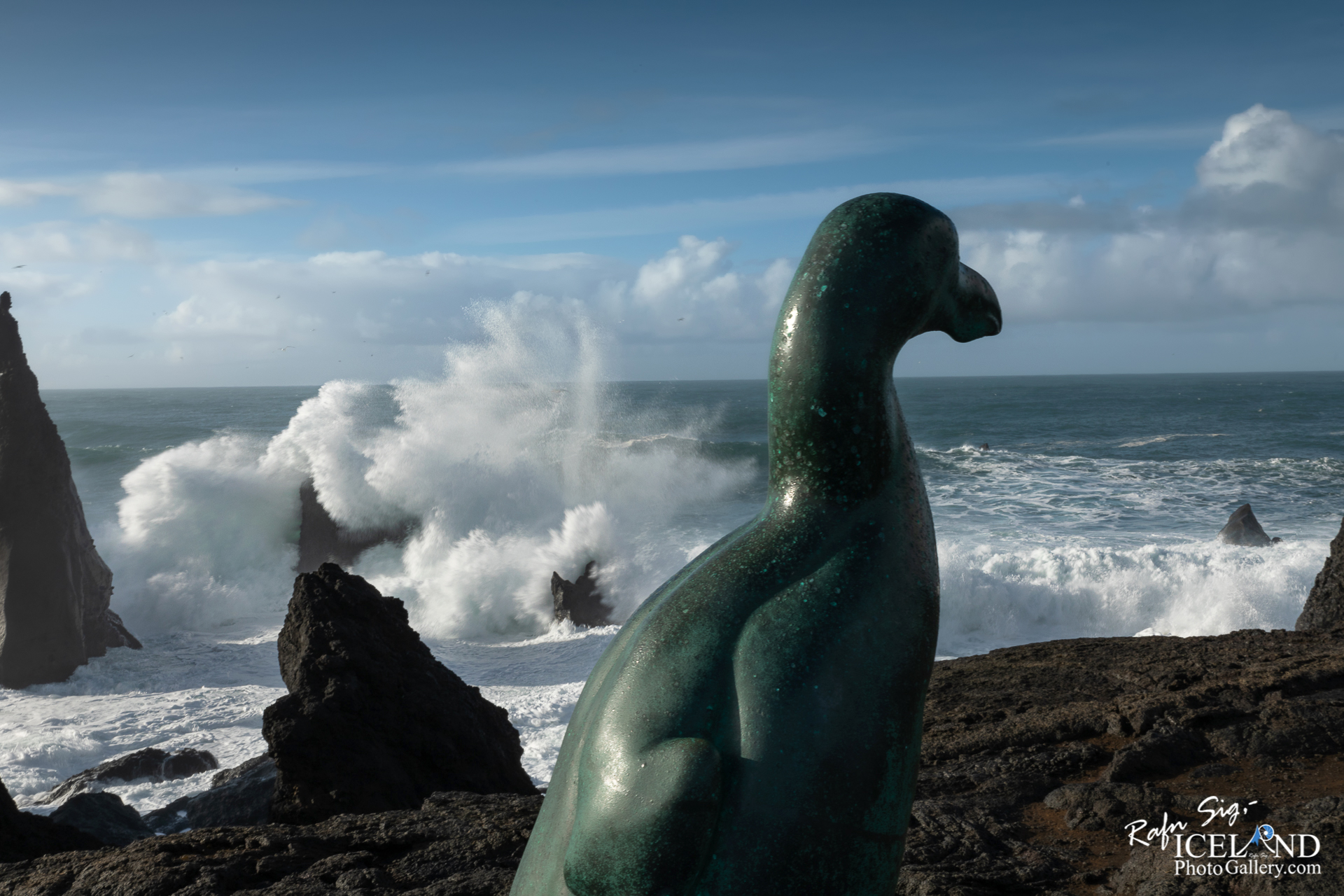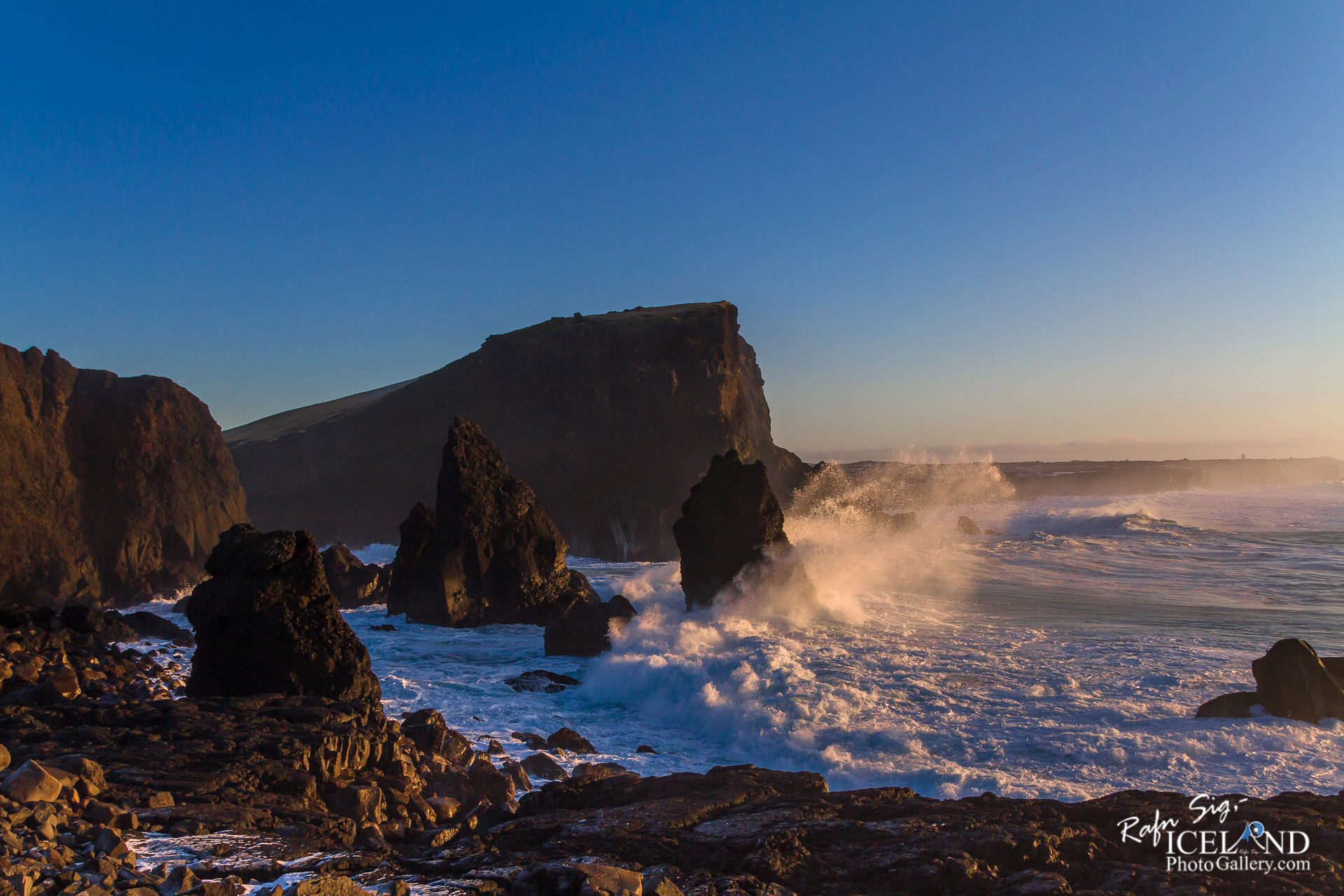2023-04-11
Geirfugl (Pinguinus impennis) │ Iceland Photo Gallery
Documenting Iceland
by: Rafn Sig,-

Geirfuglinn er útdauð fuglategund af álkuætt. Geirfuglinn var allt að 70 cm hár, vó um 5 kg og var ófleygur. Í útliti líktist geirfuglinn nokkuð mörgæsum, en er ekki af sömu ætt. Geirfuglinn var góður sundfugl og nærðist einkum á fiski. Útbreiðslusvæði geirfuglsins voru strandsvæði Norður-Atlantshafsins.
Geirfuglinn var algengur víða í Norður-Atlantshafinu allt fram á 16. öld, en veiði gekk grimmt á stofninn. Lengst lifði geirfuglinn af við Ísland, en síðustu tveir geirfuglarnir voru drepnir í Eldey 3. júní 1844. Einhverjar sögur fara af því að til geirfugls hafi sést eftir það, einkum á Grænlandi allt fram á sjötta áratug 19. aldar, en óvíst er um áreiðanleika þeirra sagna.
Geirfuglaveiðar voru stundaðar fyrr á öldum og farið út í eyjar þar sem geirfuglar lifðu. Í Íslandslýsingu sem talin er vera eftir Odd Einarsson biskup er þessi lýsing á slíkum veiðum: „Þegar fiskimenn fara þangað til fuglatekju, verða þeir fyrir árásum fugla þessara, sem ráðast á komumenn í þéttri fylkingu og með feiknakrafti og troða þá niður, nema mennirnir sjái við árásinni með því að drepa nokkra hina fremstu í fylkingunni. Þá snúa hinir frá og leggja á flótta,og er þá fyrirhafnarlítið að taka þá á undanhaldinu.
Framan af var geirfugl veiddur til matar, en þegar fuglinum fór að fækka verulega fóru safnarar og náttúrugripasöfn að borga háar fjárhæðir fyrir fuglinn og má segja að það hafi verið hinn endanlegi dauðadómur tegundarinnar.
The great auk (Pinguinus impennis) is a species of flightless alcid that became extinct in the mid-19th century. It was the only modern species in the genus Pinguinus. It is not closely related to the birds now known as penguins, which were discovered later by Europeans and so named by sailors because of their physical resemblance to the great auk.
It bred on rocky, remote islands with easy access to the ocean and a plentiful food supply, a rarity in nature that provided only a few breeding sites for the great auks. When not breeding, they spent their time foraging in the waters of the North Atlantic, ranging as far south as northern Spain and along the coastlines of Canada, Greenland, Iceland, the Faroe Islands, Norway, Ireland, and Great Britain.
The bird was 75 to 85 centimetres (30 to 33 inches) tall and weighed about 5 kilograms (11 pounds), making it the largest alcid to survive into the modern era, and the second-largest member of the alcid family overall. It had a black back and a white belly. The black beak was heavy and hooked, with grooves on its surface. During summer, great auk plumage showed a white patch over each eye. During winter, the great auk lost these patches, instead developing a white band stretching between the eyes. The wings were only 15 cm (6 in) long, rendering the bird flightless. Instead, the great auk was a powerful swimmer, a trait that it used in hunting. Its favourite prey were fish, including Atlantic menhaden and capelin, and crustaceans. Although agile in the water, it was clumsy on land. Great auk pairs mated for life. They nested in extremely dense and social colonies, laying one egg on bare rock. The egg was white with variable brown marbling. Both parents participated in the incubation of the egg for around 6 weeks before the young hatched. The young left the nest site after 2–3 weeks, although the parents continued to care for it
. . . All info at: https://www.patreon.com/RafnSig
You can buy this and other photos at my Icelandic Stock Photo Web: IcelandStockPhotos.com
– 0 –
Viltu styrkja þessa síðu?
Vefsíðan Iceland Photo Gallery er unnin í sjálfboðavinnu. Ef þú hefur áhuga á að styrkja þetta framtak til áframhaldandi uppbyggingar er hægt að leggja inn á:
Reikningsnr.: 0101-26-013169
Kennitala: 310155-4469













